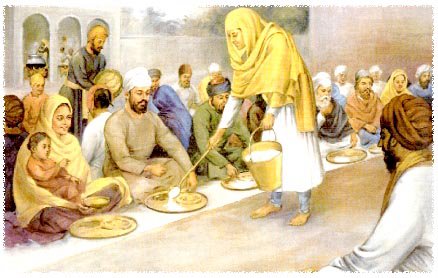Guru Nanak, born in 1469, and nine other Gurus molded and built a new route to God, resulting in the world’s fifth-largest religion. The ideas of equality, human dignity, and mutual respect underpin Sikh society.
The Khalsa Panth, or the international Sikh community, has adopted these values as its guiding principles.
Sikhs are students, lifelong learners, seekers of truth and justice who live by the three golden rules: The first is Kirat Karni, which is hard and honest labor/work, followed by Vand Chakna, which is sharing one’s possessions with everyone, including the less fortunate, and finally Naam Japna, which is saying and contemplating the name of God and meditating on the virtues.
The objective of life for a Sikh is to recognize and work toward comprehending the oneness of the Creator and the creation, thereby recognizing everyone as equal. Love for everyone, selfless service, humility, compassion, equality, and justice for all are some of the key values of Sikhs.
Sikhs account for 99% of turban wearers in the United States. The Turban or Dastaar is a head covering that can be worn by both men and women. Sikhs wear their hair long and uncut.
Males have their hair bound up beneath a turban, while females have their hair braided or tied up in a bun, though some females choose to wear a turban. A young Sikh boy begins to cover his hair with a little turban called a Patka. Initiated Sikhs also wear the 5Ks, or articles of faith, which are: Kara, an iron/steel bracelet representing God, Kanga, a special wooden comb for discipline, Kirpan, a small sword representing justice for all, Kachera, a pair of special shorts representing the high moral character, and Kesh, a pair of special shorts representing simplicity and discipline. Males have the surname Singh, which means “lion,” and females have the surname Kaur, which means “princess.”

Sikh spiritual study and fellowship center. The Sikh ceremony begins with Sangat, or everyone sitting on the floor together reading and reciting passages from The Guru Granth Sahib, the Holy Scripture. Music is an important aspect of Sikh worship; songs from the holy book are performed using predefined musical scales, which is known as Kirtan. The day’s sermon, termed Hukum, is read at the end, and that is the order of the day.
Ardaas is the ultimate Sikh prayer, which begins with Nanak Naam Chardi Kala Tere Bhane Sarbat Da Bhala and ends with Nanak Naam Chardi Kala Tere Bhane Sarbat Da Bhala. Gurdwaras have two institutionalized mechanisms: one for instilling a sense of equality in Sangat, a congregation of all sitting together, and the other for instilling a sense of community.
‐ The Holy Book is 1430 pages long and contains divine revelations and writings by the faith’s founders as well as enlightened Hindu and Muslim saints. It exemplifies interfaith harmony and understanding. As a result, it has become the most universal religious literature. The Holy Scripture is written in Gurmukhi and is structured poetically. The daily prayers are called Nitnem Bani, while the hymns are called Shabads. For a Sikh, the Guru Granth Sahib, the Wisdom of the Word, is the complete and final incarnation of the Guru.
The Three Golden Rules summarise Guru Nanak’s main philosophy:
Naam Japna – Remember God’s Name in all of your endeavors.
Guru Ji directly taught the Sikhs Simran and Naam Japna – a meditation on God by reciting, chanting, singing, and persistent recall, followed by thorough study and comprehension of God’s Name and qualities. To practice and walk the path of Dharam (righteousness) in actual life – The Sikh’s inner thought is therefore continually immersed in praises and adoration of the Creator and the ONE ETERNAL GOD Waheguru.
Kirat Karni – Make a living by hard effort and honest means.
He intended Sikhs to live as honorable homeowners and to practice Kirat Karni, which means to earn honestly through physical and mental work while accepting both sufferings and pleasures as GOD’s gifts and blessings. One must always be genuine and fear only the Eternal Super Soul. Live a decency-based existence rooted in Dharam – a life governed by high spiritual, moral, and social principles.

Vand Chakna – To serve and share selflessly with others, especially those less fortunate than yourself.
Sikhs were encouraged to share their wealth throughout the community by practicing Vand Chakna, which means “Share and Consume Together.” The Sadh Sangat, or community, is an important aspect of Sikhism. One must be a part of a community that lives the perfect objective values established by the Sikh Gurus, and every Sikh must contribute to the common communal pool in whatever way they can. Guru Nanak’s teaching of sharing and giving is very significant.
As is clear from these basic tenets, Guru Nanak elevates one’s actions and conduct above all else. According to Guru Nanak, the ultimate virtue is truth, but the best virtue is truthful life (AG 62). As such, he supported active participation in one’s community’s daily concerns. Guru Ji was a householder who opposed the ascetic lifestyle. He understood that true morality could only be measured via one’s interactions with others and that individuals who attempted to avoid the world’s issues were not immoral, but rather amoral.








